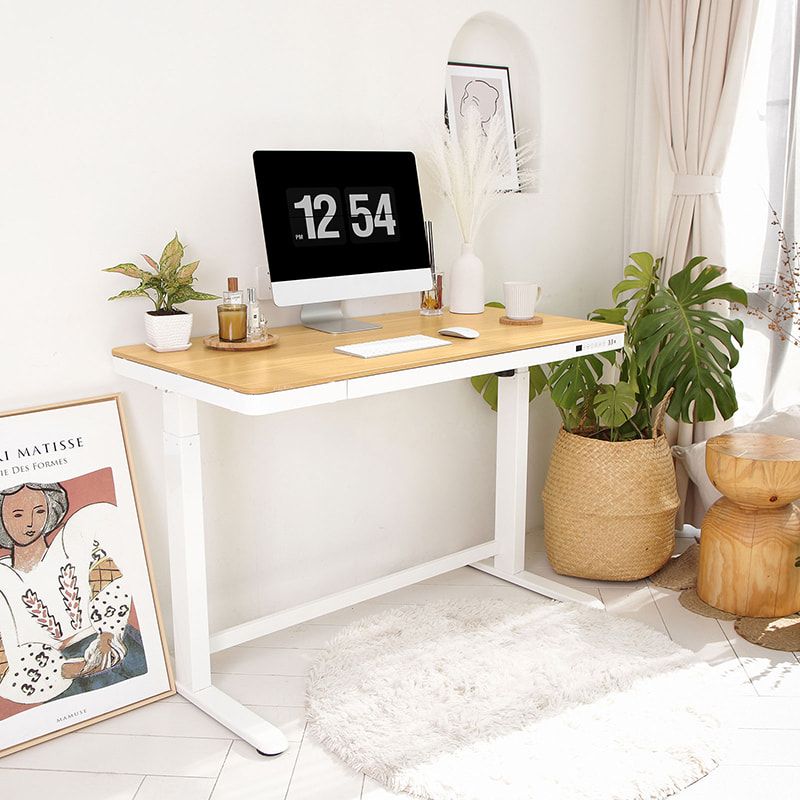Working remotely today is the norm, but working in a small space can make it difficult to get things done. From ergonomic chairs that transform a space into a workstation to standing desks and alternate workstations, there's a lot of choice on the market. Whether you’re setting up a makeshift office in a spare room or just need to create a space for yourself, we’ve got a few tips to help you out.
Read on to learn how to create a productive office in a small space.
Choose your space wisely
The first step is figuring out what you need. If you’re working from home, you’ll need to decide whether you'll keep your space free for work only, or whether it will be a space where your work life and home life can meet (e.g., a dining table).
Find the right furniture for your setup

There are many options available for creating an ergonomic workspace in a small space. One of the most popular solutions is standing desks. Standing desks allow people who need to stand or alternate between sitting and standing throughout their workday to optimise their productivity and comfort.
Alternating between sitting and standing throughout the day can help people who experience fatigue in their legs, feet, knees and back to be more productive by easing any pain they may have. Some people find that using a standing desk and lowering it to a seated desk throughout the day increases their productivity and reduces the risk of repetitive stress injuries.
Regardless of the type of workspace, you’ll need a dedicated chair. You can choose any kind of chair, but it should ideally come with an adjustable height mechanism so you can sit at the right level for your body. Your choices will depend on your budget, space, and preferences - to get started, check out our range of ergonomic chairs on our website.
If you spend most of your workday sitting down, it’s worth considering investing in an active option like a desk bike so you can move throughout the day without having to take up valuable floor space with multiple pieces of furniture.
Design your space
Once you’ve decided on your workspace set-up, the next step is to figure out what you need to organise your space and how you want it to look. After choosing furniture for your space, measure the area to see whether everything will fit. If there is more space that you need, be sure to leave enough room for a makeshift break area!
After you’ve checked what will fit in your space, it’s time to consider the furniture and equipment that you can afford. As with any purchase, there will be choices: whether to buy new or used; whether to go for an existing piece or create something custom; and how much you want to invest in it.
If you have a limited budget, or can’t afford new additions right away, consider shopping for alternative options (for example, a desk converter is a great option in place of an adjustable standing desk) or check out used furniture similar to what you’re looking for. You might even strike it lucky and find something with the same features at a better price than new products!
Otherwise, invest the time to shop around to find what you want at a lower price. Or, perhaps consider renting furniture items instead of buying them new.
Whatever equipment you choose, always remember to look at the warranty and features offered. Is it easy to move around your workspace? Is it easy to set up and use? Does the seat recline? How long does it fold away and store? These questions can make a significant difference when you have limited space.
Make sure your new workspace is ergonomic
Now that you’ve picked out the perfect furniture and equipment, and you've placed them in the perfect spot in your new workspace, it’s time to make sure you've set your workspace up properly. Using furniture correctly can help prevent uncomfortable issues like back, arm, neck, and wrist pain for people of all ages.
As we mentioned earlier, one of the most important features of your office furniture is that it should adjust in height - chair height, desk height, and keyboard height - so you can sit at the right angle for comfort and productivity. When selecting your new adjustable chair, choose one with arms for additional support for your back.
In summary, you don't need a big desk space to work ergonomically – and creating an ergonomically sound workspace doesn't need to cost a lot of money. There are many ways to make your workspace healthier, such as getting an ergonomic chair or desk, or using a convertible option. As we've found, having a healthy workspace can improve your health and productivity at work, and help you get your work done faster, and with less stress.